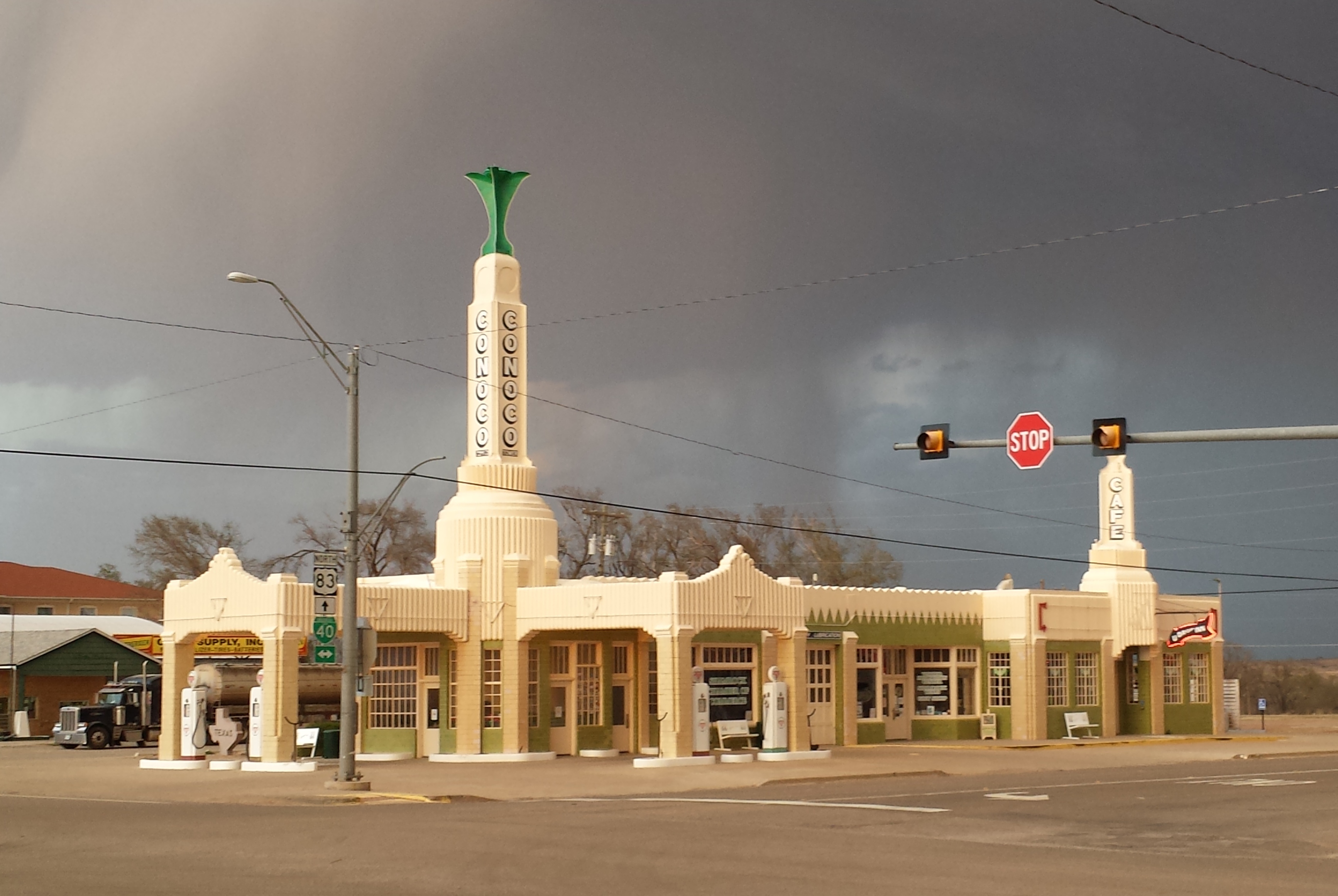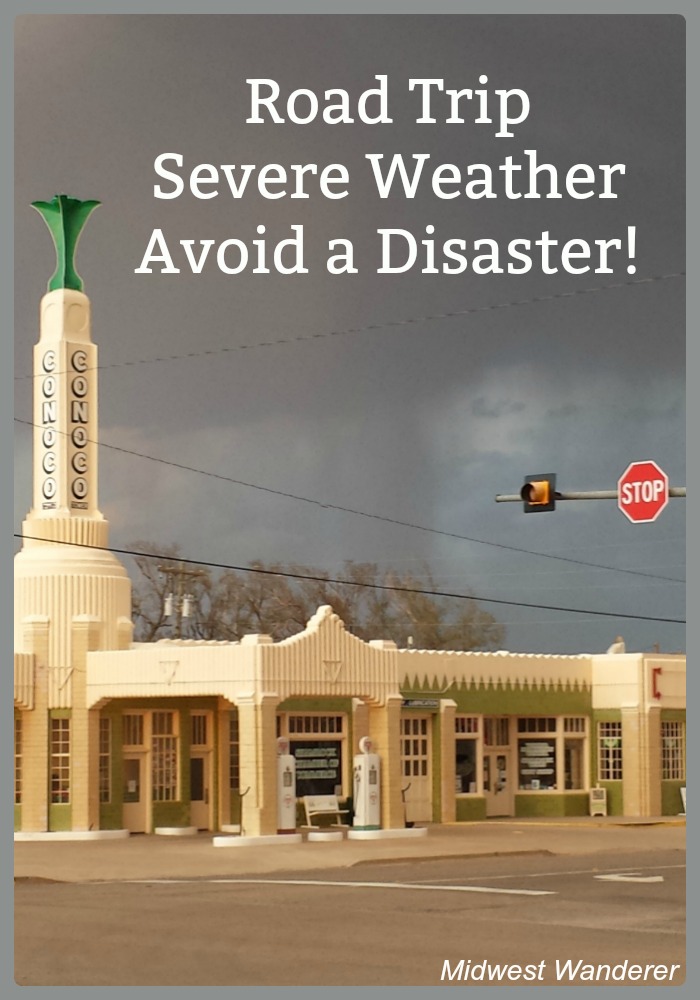Two years ago we were on a road trip headed home to the Midwest from Arizona. As we drove through Texas at dusk, ominous clouds darkened the sky, threatening severe weather. We got off the interstate and drove Route 66 instead to avoid heavy traffic. It wasn’t long before large rain drops pelted the windshield, followed by a downpour. At times we could barely see in front of us. Fortunately, there was no hail. We slowly made our way Elk City, Oklahoma, where we had reservations that night. We did have a NOAA weather radio with us, something we always road trip with, so we knew there were no tornadoes spotted. But it wasn’t a fun drive, having to take care that we didn’t drive into floods on unfamiliar dark roads.

Fast forward to this year. Once again we were headed home from Arizona. This time we watched the radar and the weather forecasts for a few days before our drive. Entire states were under severe storm warnings—every state, in fact, that we had to drive through, from the central part of the Texas panhandle eastward and northward to home. We contemplated heading straight north, out of the severe weather path, then heading east. In the end we decided to wait it out. Rather than driving into possible flooded areas and more storms, we stayed an extra night in Amarillo, west of the severe weather. In fact, Amarillo was dry and hadn’t had any precipitation for over a hundred days.
Yes, it cost us an extra night’s hotel stay, but we took advantage of our situation. We visited the Amarillo Visitor Center to find out what there was to do in the area. We explored antique shops along Route 66, visited an RV museum, and dined al fresco at lunchtime, something we wouldn’t be able to do again until summer once we got home.
Don’t miss a Midwest Wanderer post. For a FREE subscription, enter your e-mail address in the Subscribe2 box to the right and click Subscribe.
During our outings that day we struck up conversations with a few other people. One couple was driving southwest from Chicago. They had driven the previous day through Oklahoma City in a hail storm and flooding. In another conversation with a young woman, I mentioned why we were in Amarillo. She commented that she would never have even checked the weather, that she would have driven right into the storm. With all of the information available today, from television stations specializing in weather to easy-to-search radar on your computer or cell phone, it’s easy to know the weather forecast ahead of time.
There are, however, times when unpredicted severe weather develops. Tornadoes and thunderstorms are mostly associated with spring and summer, but they can occur year-round. Strong wind, hail, lightning, and flooding can lead to disasters if you don’t take the proper precautions.
If you’re traveling when severe weather strikes, what should you do? Here are tips from the National Weather Service:
- Have a source of weather information, either a NOAA weather radio, an app on your cell phone, or local radio broadcasts. Warnings from the National Weather Service now often include interstate highway mile markers, so if you’re driving in an unfamiliar area, it’s easier to know whether you may be driving toward severe weather.
- During a tornado warning, get off the road and into a sturdy building, if possible. Flying debris is the most dangerous tornado element. Get as low in the building as possible. As a last resort, abandon your vehicle and lie flat in a ditch or low spot.
- DO NOT take shelter under a highway overpass, where you’re exposed to higher wind speeds with no protection. Wind and flying debris become channeled underneath the overpass. In addition, your parked car could block traffic, putting others at risk.
- During a thunderstorm, a closed, hard top metal vehicle IS safe. However, if you can safely get to a sturdy building, do so.
- Don’t drive through flooded roads, which are especially difficult to see at night. More than half of all flood fatalities are vehicle related. It takes only 12 inches of rushing water to carry away a small car. Turn around—don’t drown!
Don’t get caught in severe weather, turning your vacation into a disaster. Plan ahead and keep aware of the weather as you travel to keep your trip safe and enjoyable.
Pin It!

**********
Disclosure: This article contains an affiliate link. If you make a purchase through this link, I will receive a small commission, at no additional cost to you.
Thank you for reading Midwest Wanderer. Don’t miss a post. Enter your e-mail address below and click Subscribe. We will notify you whenever we publish another post. Subscription is FREE. After subscribing, be sure to click the link when you get the e-mail asking you to confirm. – Connie
